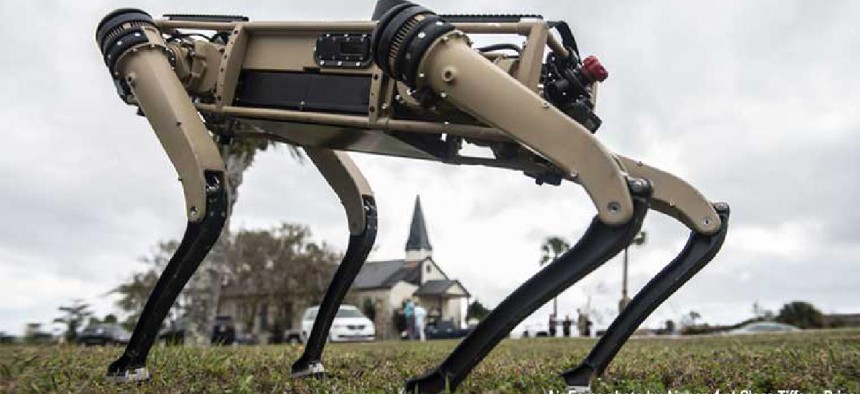Robotic dogs patrol Tyndall AFB
The unmanned ground vehicles, which resemble headless robot dogs, use on-board computers, cameras and other detection devices as they patrol a set path scouting for threats.
Tyndall Air Force Base is the first Defense Department installation to integrate semi-autonomous robot dogs into patrolling operations.
The unmanned ground vehicles, which resemble headless robot dogs, were developed by Ghost Robotics. The Vision 60 Quadrupedal UGVs use on-board computers, cameras and other detection devices as they patrol a set path scouting for threats. The robotic dogs limit human exposure to potential dangers and free up service members for more pressing duties.
The UGVs are integrated with Immersive Wisdom’s 3D Virtual Ops Center, which will allow Air Force personnel at the Base Defense Operations Center -- whether on their desktops, touch tablets or in virtual reality – to direct the devices.
“We will be able to see exactly what the robot dog is detecting through its mobile camera and sensor platform if desired, we will also be able to issue verbal commands to a person or people through a radio attached to the dogs,” said Maj. Jordan Criss, 325th Security Forces Squadron commander. “These robot dogs will be used as a force multiplier for enhanced situational awareness by patrolling areas that aren’t desirable for human beings and vehicles,” he said.
Three UGVs demonstrated their abilities at a Nov. 10 event.
This article first appeared on GCN, a Defense Systems partner site.





